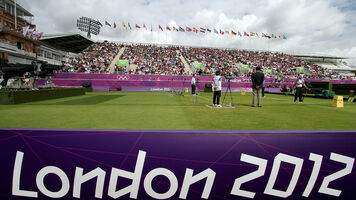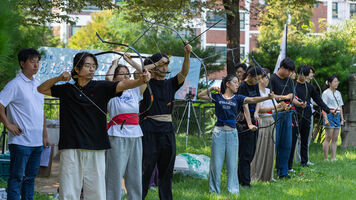Best Olympic Archers of All-Time: #4 Hubert van Innis
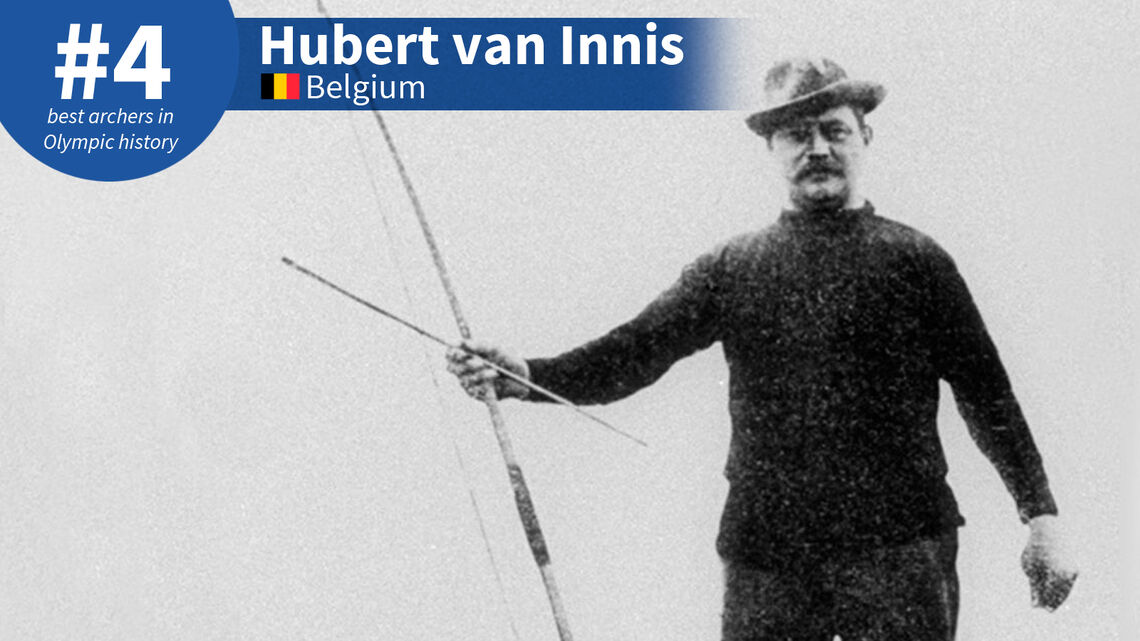
Each week in the lead up to the Rio 2016 Olympic Games, we’ll be revealing another athlete on our list of the top 15 Olympic archers of all time. This week, it’s…
#4: hubert van Innis
NOC: Belgium 
Born: 24 February 1866, Elewijt, Vlaams Brabant, Belgium 
Died: 25 November 1961, Zemst, Vlaams Brabant, Belgium  (Aged 95)
(Aged 95)
Olympic caps: 2 (Paris 1900, Antwerp 1920)
The Medals
 | Paris 1900 Olympic Games | Cordon Doré 33m |
 | Paris 1900 Olympic Games | Chapelet 33m |
 | Paris 1900 Olympic Games | Cordon Doré 50m |
 | Antwerp 1920 Olympic Games | Moving Bird 28m |
 | Antwerp 1920 Olympic Games | Moving Bird 33m |
 | Antwerp 1920 Olympic Games | 50m Team |
 | Antwerp 1920 Olympic Games | 33m Team |
 | Antwerp 1920 Olympic Games | Moving Bird 50m |
 | Antwerp 1920 Olympic Games | 28m Team |
The Reason
Hubert Van Innis is the greatest archery Olympian you may never have heard of. With six gold medals and three silver medals from just two appearances, 20 years apart, he is far and away the all-time leader in terms of Olympic medals from the sport.
All the other archers in our top 15 ranking competed from the 1970s onwards, after the sport was reintroduced to the summer Games in 1972 with standardised international rules.
Van Innis competed in an Olympic era vastly different from the one today, shooting in only the second modern Games at Paris 1900, and then reappearing to grab more medals at Antwerp in 1920, after which there was a 52-year lull until Olympic arrows would fly again at Munich in 1972.
At Paris in 1900, the Games were just a part of a huge international event called the World’s Fair.
Held over five months, the sports contested included motorcycle racing, pelota, croquet and ballooning. Many sports did not even award medals – sometimes cups or trophies were distributed, and sometimes winners were even given money to buy their own medal!
Even the number of official Olympic archery events is still debated. There were thirteen separate associated competitions over those dates, with over 5000 archers taking part – all men. Officially open to all comers, in practice almost all the archers taking part were French, with a handful from Belgium and the Netherlands.
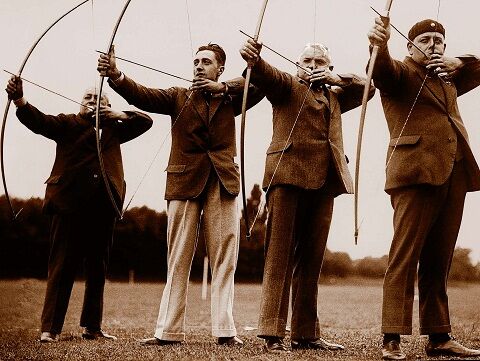
Scholars now usually identify six events as part of official Olympic history, with van Innis taking silver in the 50m and gold in the 33m ‘au cordon doré’ event and gold in the 33m ‘au chapelet’ event – beating a Frenchman each time and becoming Belgium’s first ever Olympic medallist. He also recorded a fourth place finish in another shoot. Unfortunately, his scores were not recorded!
Hubert Van Innis was born in 1866, and when young was forced to deliver milk for his parents in the villages around Brussels. The story goes that he left with a cart, a dog and the milk to provide to several restaurants, but apparently always sent the dog home with the cart and went to shoot archery, then pretty much the national sport of Belgium.
He went on to become an architect by profession, but archery remained the focus of his life.
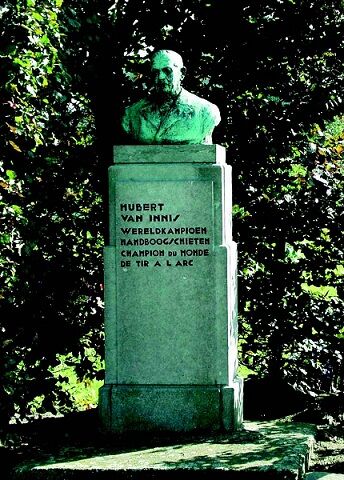
On home soil in Antwerp, once again Van Innis rose to the challenge with his longbow; by this time he was 54 years old. Held in Nachtegalen Park, the archery was contested between just 30 men from three nations. Uniquely, the events of 1920 included shooting at ‘fixed’ or ‘moving’ birds; both of which were variations of what is now called ‘popinjay’ archery, still practised in parts of Belgium and the UK today. The ‘moving bird’ round involved trying to knock bird-shaped targets off a crossbeam attached to a pole 31 metres off the ground.
Van Innis took home an extraordinary haul of two individual golds and a silver from the moving bird round, and two team golds and a silver from the target rounds. Archery would never be contested at the Olympics again in his lifetime, but he became – and remains – the most decorated Belgian Olympian ever.
His story doesn’t end there.
A well-known bon viveur, in the early 1920's he owned a restaurant in Brussels with a bowling alley and an indoor archery range. Albert the First, the King of Belgium, once watched him shoot there.
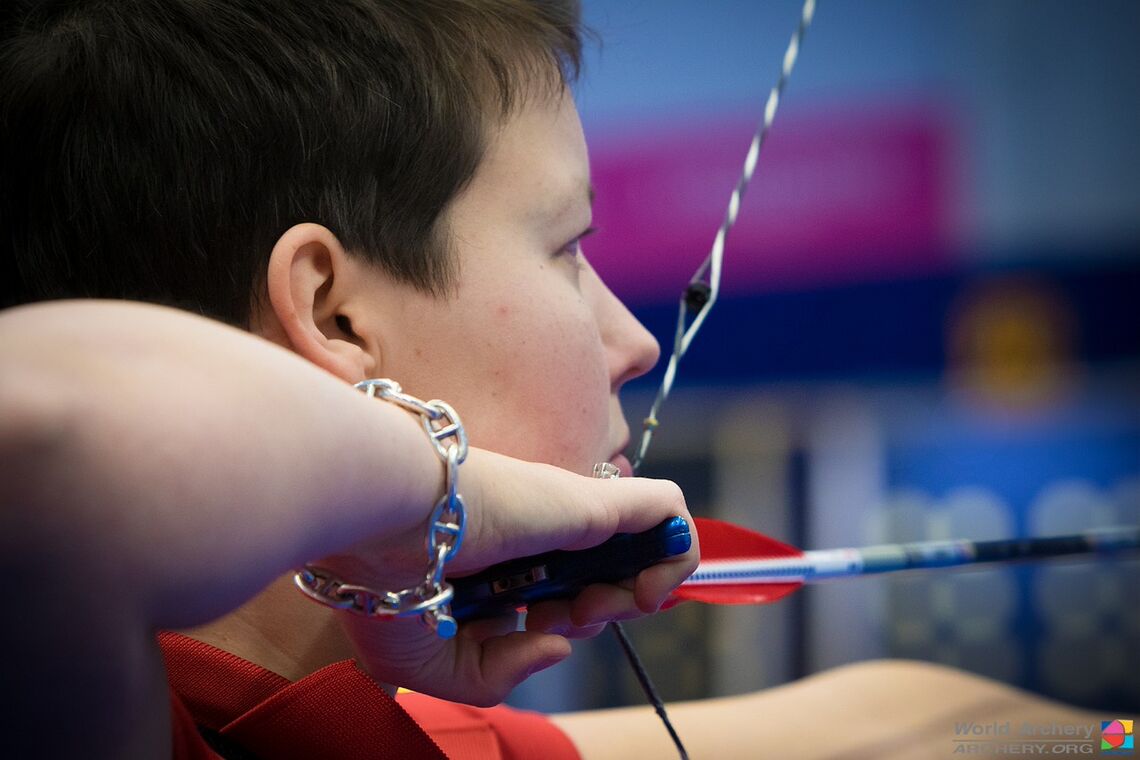
Incredibly, 13 years after his final Olympic victory he won the world championships in 1933 at 67 years old. He continued shooting well into his 80s and 90s, eventually dying at the age of 95 in 1961. It seems likely that he would have won even more Olympic medals if the sport had been included in the Games of the 20s and 30s.
There is a statue of Van Innis in his hometown of Elewijt, and his legacy has continued through his family. His great-grandson Philippe Prieels competed for Belgium at several World Cup events, and Philippe’s daughter Sarah Prieels has been competing internationally since 2008, and is currently the European indoor and outdoor compound champion, continuing the archery dynasty.
Hubert van Innis was the supreme Olympic archer in the age of the gentleman amateur.
He didn’t attach much importance to his medals, apparently giving them away to ‘all and sundry’, but his Olympic total of nine gold and silver archery medals seems unlikely to ever be beaten. 2016 marks the 150th anniversary of his birth.




